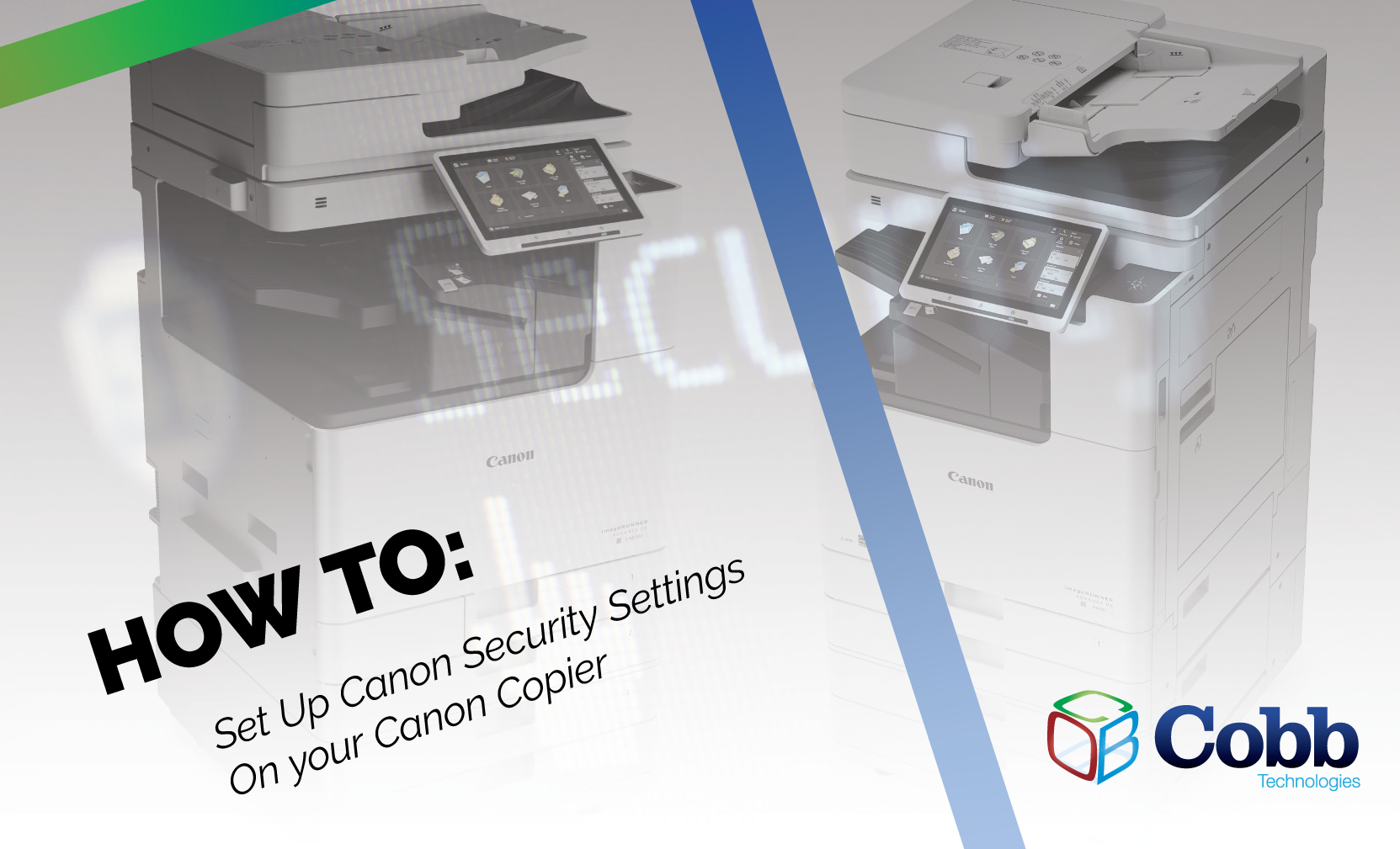3 min read
Building Culture That Works: Cobb Tech Named One of VA's Best
Cobb Technologies has been honored as one of the 2025 Best Places to Work in Virginia by Virginia Business and Best Companies Group. This prestigious...

Recently, Canon released documentation concerning how to configure security settings for the following copier models:
To view the specific documentation on how to configure security settings for these models, click here.
In 2015, the NIST (National Institute for Standards of Technology) released a list of security practices and requirements that organizations must follow in order to do business with the federal government. These standards were set by IT security professionals who sought to determine how best to mitigate disasters, intrusions, and other security risks like ransom ware and phishing from affecting networks.
If you’d like to read the nitty-gritty details, you can head over to NISTs website to read the technical document here.
Essentially, the NIST guidelines state that an organization must take reasonable steps and precautions to mitigate a disaster or bad actor from reducing or completely interrupting your business’ ability to operate on your network and shared devices.
Some of the more prominent security practices are:
There’s a lot more to it than that, but for a high level understanding, what you really need to know is that all of your networked devices must be protected.
Coincidentally, many of these standards listed above are pre-qualifications your organization must meet before being put on a cyber liability insurance plan. So, if your organization does business with government agencies or offices, or you want to be protected from financial hardship with the backing of cyber liability insurance, following the standards set by NIST is practically required. They are standards, after all.
A copier is a computer with the added functionality of printing, scanning, copying, and sometimes faxing. Just like your laptop or desktop, it uses a hard drive to store information: such as your groups, emails, fax numbers, and quick-access documents.
And unless you plug a USB into your copier every time you print, your copier is networked, making it available to outside connections. This creates the perfect storm — printers, and print servers, are often “set it and forget it” pieces of network infrastructure, and as such, are rarely actively monitored for intrusion from bad actors. If an unprotected copier does fall to intrusion, ransomware can be installed on the network via the connection the copier uses, sensitive documents that are scanned, copied, or printed can be captured by bad actors, or viruses could be transferred to every device that connects to the copier.
For a bad actor, an unprotected copier is a veritable honeypot of information and user connections.
This is why copier manufacturers like Canon are constantly adding new layers of security to their devices, such as the switch from TLS1.2 to TLS 1.3.
The topic of this blog, the new security settings introduced to Canon copiers, are additional layers of protection you can add to your network to reduce the chance of a bad actor successfully stealing or holding your data for ransom.
Balancing the needs of your network’s security against the workflow of your employees is a delicate task. However, there are a few questions you can ask yourself to make the decision process simpler:
Use these questions as a jumping off point to start security-based conversations in your organization.
If you’d like advice on how to configure your Canon copiers’ security settings, we’re here to talk.

3 min read
Cobb Technologies has been honored as one of the 2025 Best Places to Work in Virginia by Virginia Business and Best Companies Group. This prestigious...

5 min read
Cobb Technologies is honored to hold the SWaM (Small, Women-owned, and Minority-owned Business) certification, awarded by the Commonwealth of...

5 min read
Every year, thousands of Veterans transition from military service to civilian careers in Virginia, bringing invaluable skills and experiences to...